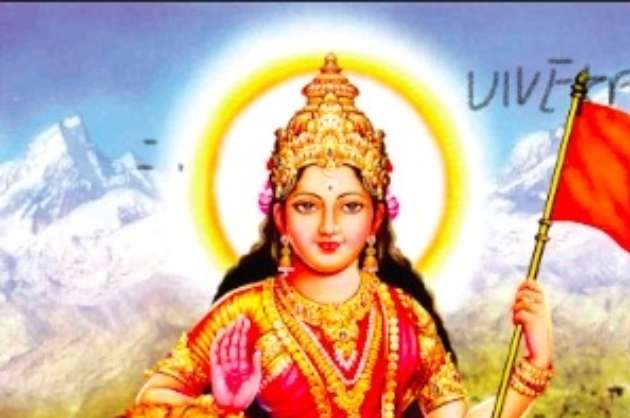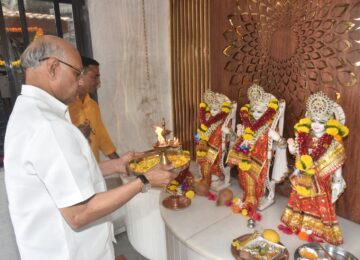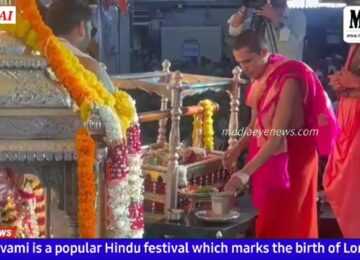Anupama Nair
Our great Prime Minister Modi inaugurated the Amrit Mahotsav or celebration of India’s 75th year of Independence. We will be celebrating this event till 2022. I am going to write a feature on all those great men and women who fought against foreign invasion not just against the British. Today I am going to write about Rana Sanga, the great King of Chittor, who was very famous for his battles against the cruel butcher of humans the founder of Mughal dynasty Babur. Babur is glorified by the ultra-left oriented historians, who unfortunately wrote our History. I even found his portrait in the party office of a political party I do not wish to mention here. However, Rana Sanga is unfortunately forgotten in the annals of History.
The city of Chittor and her history is one of the most stirring chapters in Indian history for it was here that the “flower of Rajput chivalry sprang to life and the immense stretch of its sacred walls and ruined palaces relate the saga of innumerable sieges and heroism which has almost become a myth now”. However, any patriotic Indian will never forget the tales of valor of our great kings and queens even if our History curriculum says differently.
Chittorgarh was one of the most fiercely contested seats of power in ancient and medieval India. Bappa Rawal, the legendary founder of the Sisodia dynasty, received Chittor as a dowry for his marriage to the Solanki princess. Highly fortified, “it crowns a seven-mile- long hill, covering 700 acres with its fortifications, temples, towers and palaces”. Historians claim the palace was a sight to behold. For eight centuries from the 8th to the 16th century, his descendants ruled over an important kingdom called Mewar stretching from Gujarat to Ajaymeru (Ajmer). The city of Chittorgarh is located on the banks of rivers Gambhiri and Berach.
Chittorgarh is home to the Chittor Fort, which is the largest fort not only in India but also the continent of Asia. In its history of eight centuries, it was ransacked thrice – in1303 AD by the cruel Alauddin Khilji, by 1535 AD by Bahadur Shah of Gujarat, and lastly by the cruel Akbar in 1568 AD. The great Hindu Rajput rulers fought fiercely to maintain their independence. On all three occasions mentioned above, faced with a certain defeat, the men fought to death while the women committed Jauhar (mass self-immolation). Chittorgarh is not only famous for the valor and bravery of its warriors, but also for the beauty of Rani Padmini and her Jauhar, the land of the great devotion of Meera Bai and the great sacrifice of Panna Dai!
Rana Sanga was born to the Sisodia king Rana Raimal and his queen Ratan Kunwar. The exact year of his birth is not mentioned, but it is said, some of the “astrological planetary positions at the time of his birth, was auspicious”. Based on these positions, and assuming certain other planetary positions and on basis of inscriptions in Kumbalgarh, historians calculated Sanga's birth year as 1482 AD. Sanga was youngest of the four sons of the royal couple. However, due to the circumstances and after a fierce struggle with his brothers where he lost one of his eye, he finally succeeded throne of Mewar in 1508.
After he became the king, Sanga reunited the warring Rajput clans through diplomacy and marital alliances. According to folklores, Sanga had fought one hundred battles and lost only once. In various struggle he lost his wrist and was crippled in leg. In his illustrious military career, Sanga defeated Sultans of Delhi, Malwa and Gujarat in eighteen battles and expanded his domain by conquering much of today’s Rajasthan, Western Madhya Pradesh and Northern part of Gujarat. He re-established Rajput rule in Malwa first time after the fall of Paramara kingdom in 1305 AD.
He also removed the Jaziya tax which was earlier imposed by the Sultans who ruled India. He was the last independent Hindu king of Northern India to control a significant territory and contemporary texts described him as the “Hindu Emperor”.
After conquering Malwa, Sanga turned his attention towards North Eastern Rajasthan which was then under the control of an ally of the Khillji’s Ibrahim Lodi of Delhi. This battle between Lodi and Sanga is called the Battle of Khanwa. It was the second major battle fought in modern-day India, after the Battle of Panipat. After hearing the news of Sanga attacking his territory, Lodi prepared an army and marched against Mewar in 1517. There was a fierce battle and the army of Lodi suffered serious injury and the cowards they were, they fled. One Lodi prince was captured and imprisoned. The brave Rana Sanga lost an arm by a sword cut, and an arrow made him lame for life.
Lodi, reportedly stunned by the unprecedented aggression of the Rajputs, once again attacked in 1518-19 but was humbled again at the Battle of Dholpur. Lodi fought Sanga repeatedly, only to be defeated each time, losing his entire land in Rajputana, while the influence of Sanga extended up to Agra.
Like many other kings before and after him, he was also betrayed by one of his own. This is a tale common in the history of the Subcontinent.
In the next part I will talk about his battle with Babur and the Battle of Bayana, and how he was betrayed by his own men and then lost to Babur in the Battle of Khanwa.




























